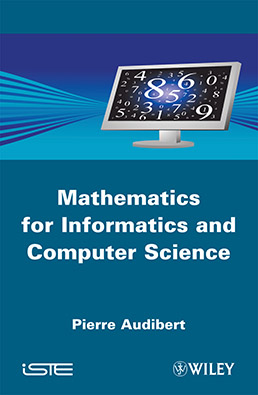
How many different ways are there to mix different ingredients? What are the odds of winning a gambling game? How many possible paths are there from one place to another in a network? Mathematics for Informatics and Computer Science gives stimulating and exhaustive answers to these kinds of questions, and provides the tools for students and professionals alike to find the solutions to these and many other similar and diverse problems using analytical techniques and tools.
The book, which is structured in three parts (Combinatorics, Probability and Graphs) is ideal for anyone with a need or desire to gain basic or advanced knowledge in combinatorial theories; it is also ideal for use in a teaching or reference setting, or for use as a textbook. The simultaneous presentation of algorithms, programs and theory permits a powerful yet unconventional mixture of theory and practice to be used to maximum advantage for the reader.
1. Some Historical Elements.
Part 1: Combinatorics.
2. Arrangements and Combinations.
3. Enumerations in Alphabetical Order.
4. Enumeration by Tree Structures.
5. Languages, Generating Functions and Recurrences.
6. Routes in a Square Grid.
7. Arrangements and Combinations with Repetations.
8. Sieve Formula.
9. Mountain Ranges or Parenethesis Words: Catalan Numbers.
10. Other Mountains Ranges.
11. Some Applications of Catalan Numbers and Parenthesis Words.
12. Burnside's Formula.
13. Matrices and Circulation on a Graph.
14. Parts and Partitions of a Set.
15. Partitions of a Number.
16. Flags.
17. Walls and Stacks.
18. Tiling of Rectangular Surfaces using Simple Shapes.
19. Permutations.
Part 2: Probability
20. Reminders about Discrete Probabilities.
21. Chance and the Computer.
22. Discrete and Continuous.
23. Generating Function Associated with a Discrete Random Variable in a Game.
24. Graphs and Matrices for Dealing with Probability Problems.
25. Repeated Games of Heads or Tails.
26. Random Routes on a Graph.
27. Repetitive Draws until the Outcome of a Certain Pattern.
28. Probabilities Exercises.
Part 3: Graphs.
29. Graphs and Routes.
30. Explorations in Graphs.
31. Trees With Numbered Nodes, Cayley's Theorem and Prüfer Code.
32. Binary Trees.
33. Weighted Graphs: Shortest Paths and Minimum Spanning Tree.
34. Eulerian Paths and Cycles, Spanning Trees of a Graph.
35. Enumeration of Spanning Trees of an Undirected Graph.
36. Enumeration of Eulerian Paths in Undirected Graph.
37. Hamiltonian Paths and Circuits.
Pierre Audibert obtained his engineering degree from the prestigious Ponts-et-Chaussées Institute, before becoming certified as a teacher of higher mathematics. He also has a PhD in Computer Science. He currently teaches at the University of Paris 8 and is a member of the Advanced Computer Science Laboratory of Saint Denis (LIASD), France.